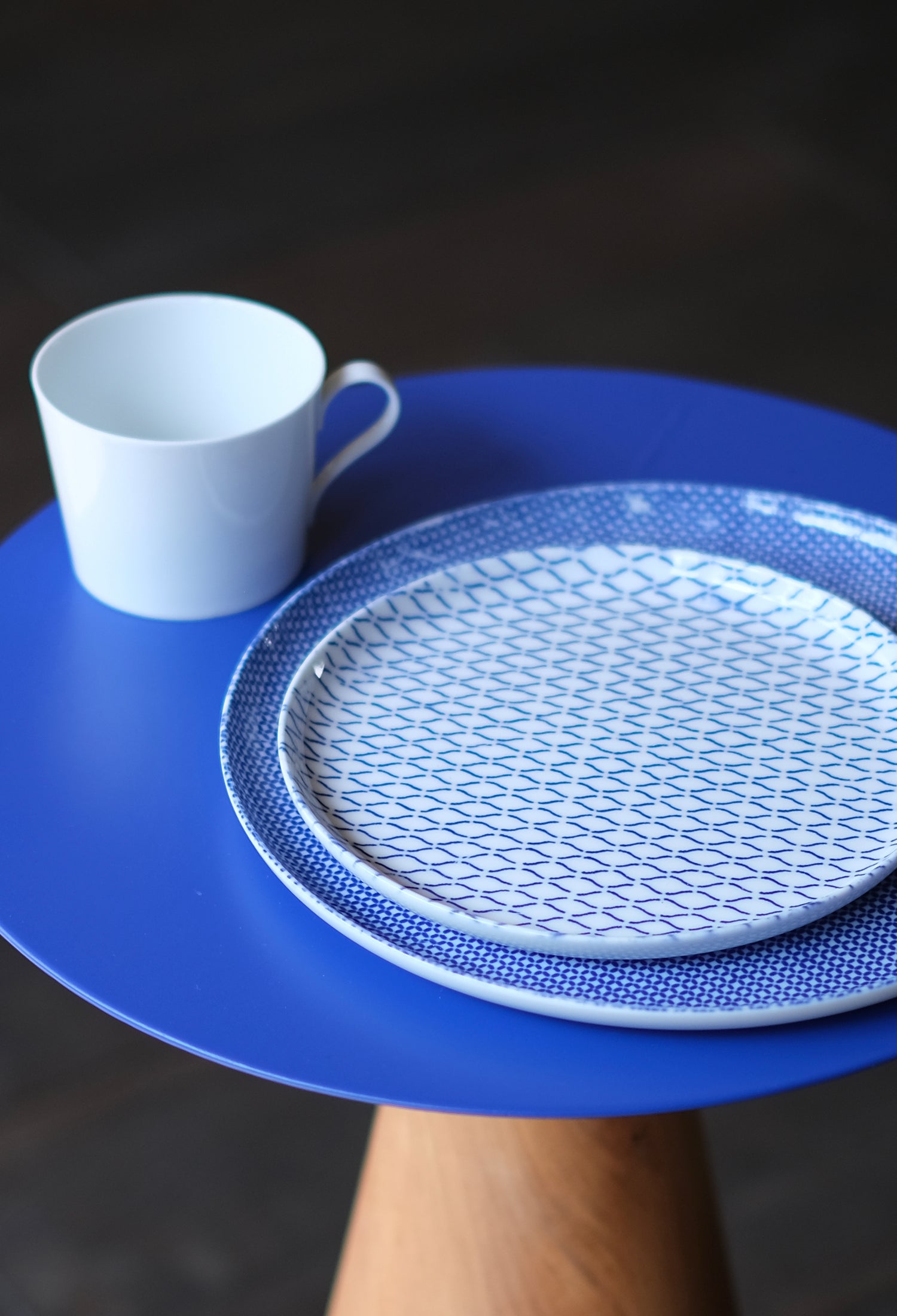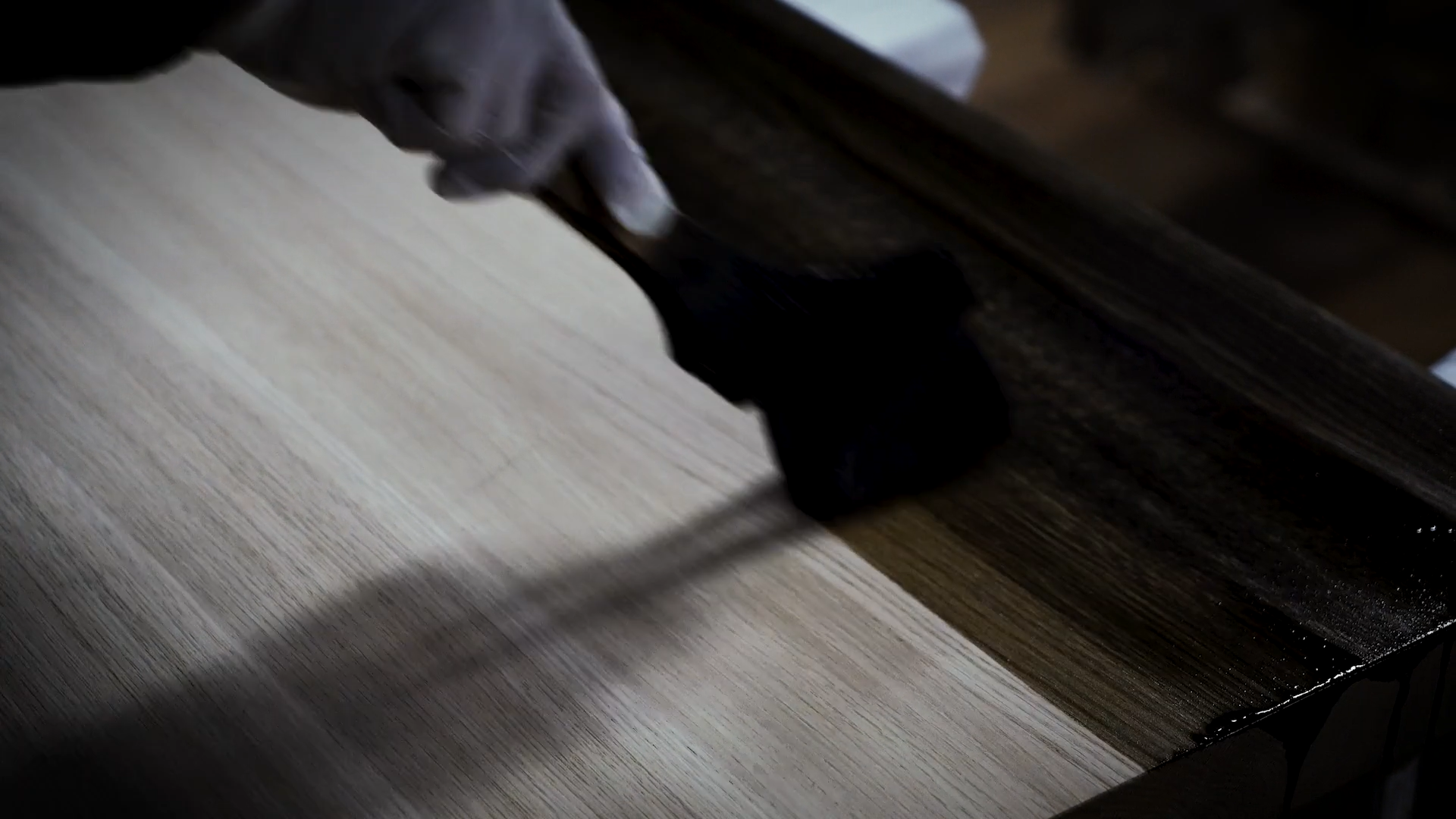MATERIALS AND CARE - Woods
A soap finish, whose main component is soap, is a secure and safe finish made from natural materials.
Unlike oil and wax finishes, this material prevents wood materials from turning a wet color and maintains the original texture.
It has a comfortable and dry feel.
As the fatty ingredient of soap penetrates into the wood surfaces to facilitate the removal of stains, and no harmful chemicals that promote drying are contained at all, this safe finish material can be used in homes with children. This finish does not prevent breakage or warpage of wood materials nor the adhesion of dirt or fingermarks.
HANDLING
- If possible, do not set up furniture in places near heat-radiating devices and air-conditioner vents, as well as places exposed to direct sunlight (ultraviolet light), which could cause breakage and warpage of wood materials.
- This finish cannot prevent adhesion of dirt completely. If dirt and fingerprints adhere to the surfaces, perform maintenance (Recommendation: Use liquid C of WENNEX).
- As this finish is less water repelling than other finishes, wiping the surfaces with a damp cloth may make them fuzzy or rough. In such a case, sand them with sandpaper and apply liquids A and B in turn. Basically, wiping with a dry cloth rather than a damp cloth is recommended.
MAINTENANCE
[Recommended products] WENNEX Soap Finish (Liquids A, B, and C)
1. Use liquid C for the surfaces with dirt. Wash off the dirt using a sponge into which a sufficient amount of liquid C is absorbed. Sponge liquid C remaining on the surfaces.
2. Sand the surfaces with sandpaper (#180) in advance to prepare the surfaces. Remove sanding dust with a clean waste cloth.
3. Apply liquid A to the surfaces with a sponge or brush. Liquid A contains detergent components that are the bases for the soap coating. As puddles of the liquid generate stains, wipe off any excess liquid carefully with a waste cloth. After letting the liquid dry for approximately two hours, remove the fuzz from the surfaces with sandpaper (#400) and wipe off the sanding dust completely.
4. Finally, apply liquids A and B in the same manner. Liquid B contains oil components for the finish. As puddles of the liquids generate stains, wipe off any excess liquids carefully with a waste cloth. After letting them dry for approximately two hours, remove the fuzz from the surfaces with sandpaper (#1000) and wipe off the sanding dust completely.
If the surfaces are maintained partially, the maintained portions turn white to cause apparent color unevenness. Perform maintenance of the entire surfaces or note in advance that color unevenness may occur as a result of partial maintenance.
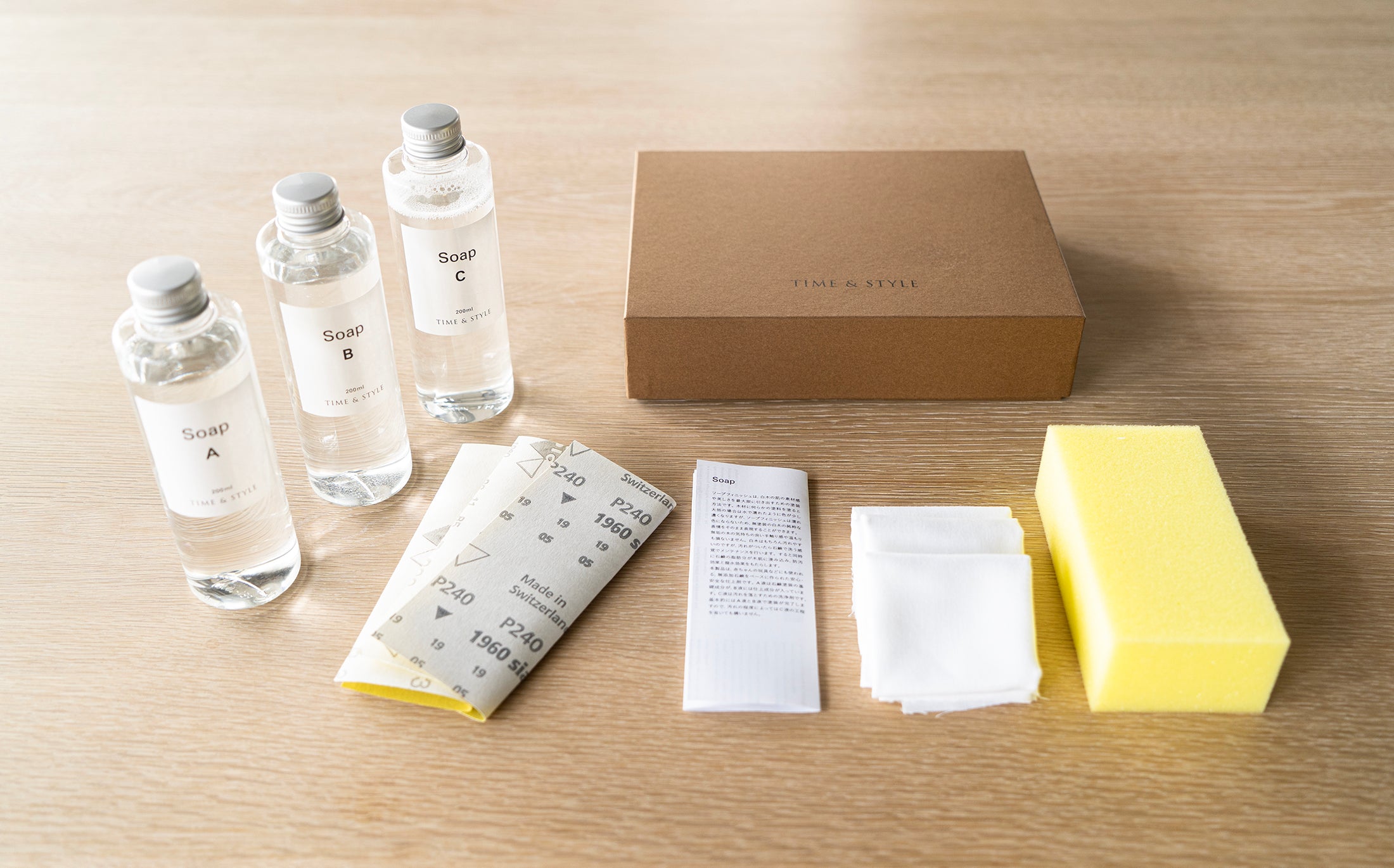
How to use


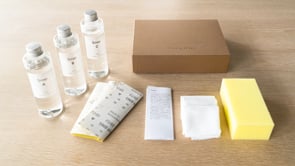
This is a completely additive-free finishing material containing sunflower seed oil produced in Hokkaido, as well as domestic beeswax. We uniquely developed this material to use as a secure and safe finish for furniture.
Sunflower seed oil prevents drying by penetrating into wood materials, and beeswax produces waterproof and antifouling effects by remaining on the wood material surfaces. As this material does not form a resin film on the surfaces like a urethane coating, the texture and feel of the wood are retained, and the aesthetic properties are enhanced over the years. This finish enables products to be used for a long period of time by applying beeswax periodically for maintenance.
HANDLING
- If possible, do not set up furniture in places near heat-radiating devices and air-conditioner vents, as well as places exposed to direct sunlight (ultraviolet light), which could cause breakage and warpage of wood materials.
- Placing hot pots and wet glasses directly on this finish could generate stains. Use coasters, place mats, pot stands, etc.
- Wiping products with a wet cloth removes beeswax from their surfaces. If wiping them with a wet cloth frequently, increase the frequency of maintenance.
- After applying beeswax, wipe it off completely. Residual beeswax could generate oil stains on clothes, documents, and books.
- There are cases where beeswax for maintenance varies in hardness depending on the season and humidity, and its components are separated. If it is hard or its components are separated, double-boil and mix it with a paddle before use.
- Beeswax does not contain 25 specific allergic raw materials etc.
- Beeswax is completely additive-free and uses natural raw materials only. However, if it reaches the eyes or mouth by mistake or if any abnormality is observed on the skin etc., see a doctor and show the beeswax just to be safe.
MAINTENANCE
1. Sand a product gently with abrasive paper (#240 to #320) with the wood grain.
2. Wipe off dirt and dust from its surfaces with a damp cloth that is tightly wrung out.
3. When the furniture surfaces become dry, apply an appropriate amount of beeswax onto a sponge and rub it with the wood grain.
4. Wipe off excessive beeswax from the furniture surfaces carefully with a soft cloth and polish them. In this case, wipe in a way such that beeswax is spread uniformly.
Furniture becomes available for use immediately after the application of beeswax. However, it is fixed more firmly a half or one day later.
Performing the procedures from one to four periodically (once a month during normal period between April and November, and once a week during the dry period between December and March) enables beeswax to be fixed, and a more stable effect can be expected. In particular, performing maintenance frequently is recommended soon after purchase because it leads to the prevention of breakage and warpage of solid wood materials.
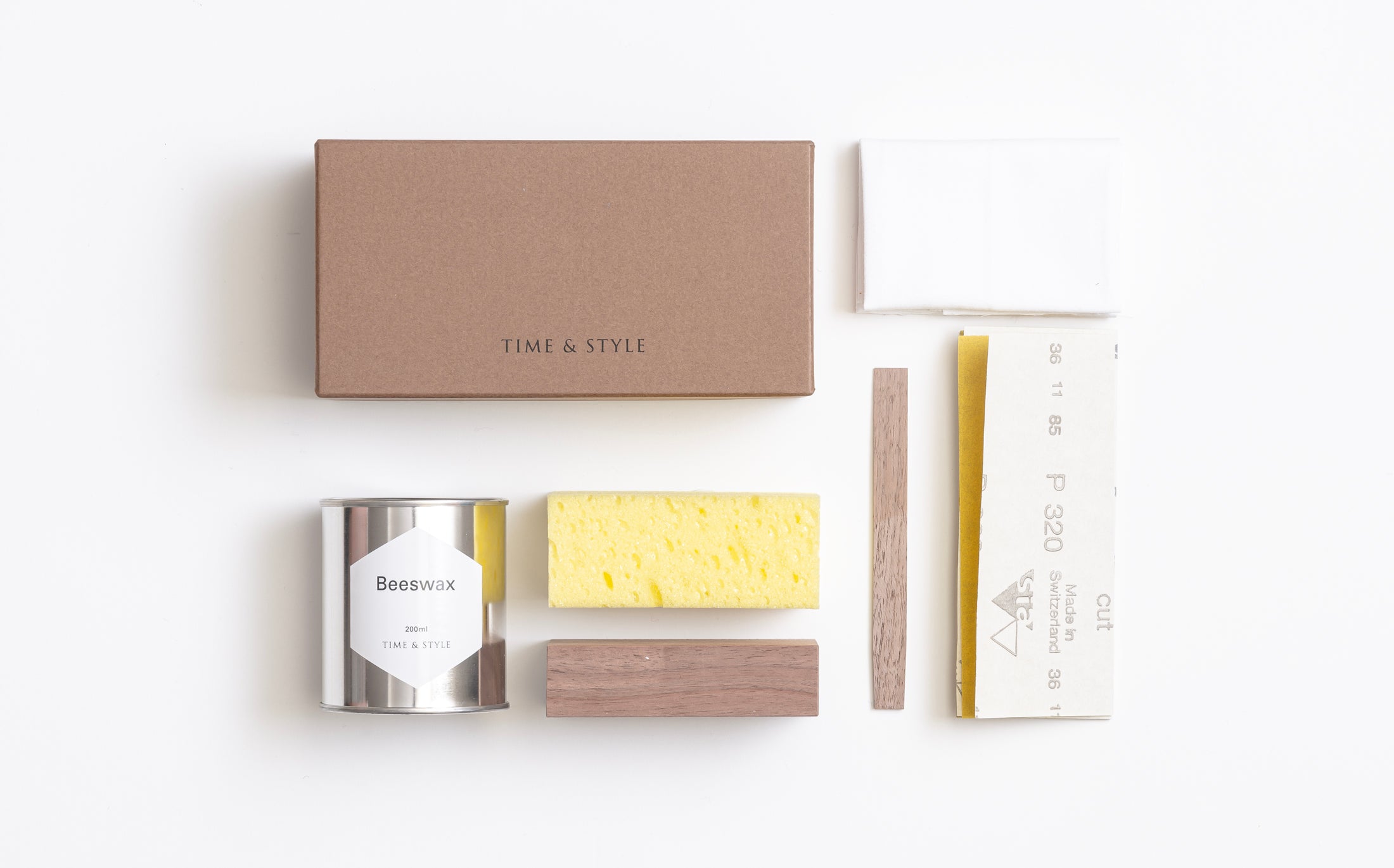
How to use



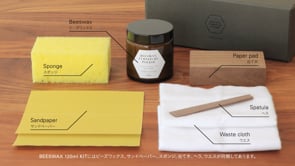
If iron contacts oak materials, it turns black as a result of a chemical reaction with tannin that is contained in wood materials. The tannin black (iron-water) finish takes advantage of this characteristic to turn oak materials black naturally.
Unlike finishes that coat the surfaces with pigments and dyes, the tannin black finish is characterized by an expressive appearance that enables the texture of the wood grain to be sensed. Although iron water is generally used as a stain for clothes and fibers, we uniquely developed it as a finish material for furniture. As the tannin content varies among oak materials, their colors are different among them. In addition, the black color becomes thinner gradually across the ages. Finish with beeswax after applying iron water.
HANDLING
- Prevent acidic liquids from adhering to the product surfaces. Highly acidic liquids, such as lemon and lime, could cause a change in color and discoloration.
- If possible, do not set up furniture in places near heat-radiating devices and air-conditioner vents, as well as places exposed to direct sunlight (ultraviolet light), which could cause breakage and warpage of wood materials.
- Placing hot pots and wet glasses directly on this finish could generate stains. Use coasters, place mats, pot stands, etc.
- Those who have a metallic allergy may experience an allergic reaction.
- Iron water may give off a distinct smell. If the smell is strong, ventilate the room, such as by opening the windows. It decreases over time.
- Beeswax is applied to the product surfaces as the final finish. Wiping products with a wet cloth gradually removes beeswax from their surfaces. If wiping them with a wet cloth frequently, increase the frequency of maintenance.
MAINTENANCE
1. Wipe off dirt and dust from the product surfaces with a damp cloth that is tightly wrung out.
2. When the furniture surfaces become dry, apply an appropriate amount of wax onto a sponge and rub it with the wood grain.
3. Wipe off excessive wax from the furniture surfaces carefully with a soft cloth and polish them. In this case, wipe in a way such that beeswax is spread uniformly.
Furniture becomes available for use immediately after the application of beeswax. However, it is fixed more firmly a half or one day later.
Performing the procedures from one to three periodically (once a month during the normal period between April and November, and once a week during the dry period between December and March) enables beeswax to be fixed, and a more stable effect can be expected. In particular, performing maintenance frequently is recommended soon after purchase because it leads to the prevention of breakage and warpage of solid wood materials.
If the surfaces are sanded strongly with sandpaper, the wooden parts that turned black are also sanded and their bases appear. If the surfaces are fuzzy, use fine sandpaper of #400 or higher to sand the surfaces gently and then apply beeswax to finish up.
A urethane coating finish forms a urethane resin coating film on the wood material surfaces to protect them from moisture and ultraviolet rays and to prevent transformations, such as breakage and warpage.
An open pore-type urethane coating that does not fill the ducts of wood materials is employed to realize a finish that takes advantage of the texture of wood materials. As this finish is less susceptible to moisture and heat compared to other finishes, wood materials are less transformed and can be used in a stable state. For daily maintenance, wipe with a damp cloth or use detergents for furniture. If the coating comes off or is discolored or delaminated by ultraviolet rays, it can be repaired in a simplified manner, such as using pens for maintenance.
 |
 |
 |
 |
| Natural White | Snow White | Medium Grey | Charcoal Grey |
HANDLING
- Placing hot materials directly on this finish could cause discoloration and deformation of the coating or wood materials. Use coasters, place mats, pot stands, etc.
- Do not use cloths containing polishing or chemical components, or they could cause discoloration or delamination.
- If a chemical cloth is left on the coating for a long time or if antiskid mats (made of polyvinyl chloride) or anti-seismic gels are used, the coating may discolor, or the coating film may come off.
- Do not use thinners, alcohols, benzine, polish removers, or antiseptic solutions for sterilization because they damage the surface coating film.
- Avoid the use of alkaline and acidic wash solutions and cleaners.
- The surface gloss may increase with time.
- The coating may come off due to age deterioration or impacts.
MAINTENANCE
- Wipe with a dry cloth or a damp cloth that is tightly wrung out.
- Be sure to wipe with a dry cloth after wiping with a damp cloth. Depending on the type of cloth used, it may get caught onto the wood fibers to make the wood material surface fuzzy. In particular, avoid the use of cloths made of chemical fibers.
- If oil stains etc. adhere to the product surfaces, remove them with a cloth moistened with diluted neutral detergent (three to five percent). After that, wipe with a damp cloth that is tightly wrung out, and then wipe with a dry cloth to remove all water droplets.
